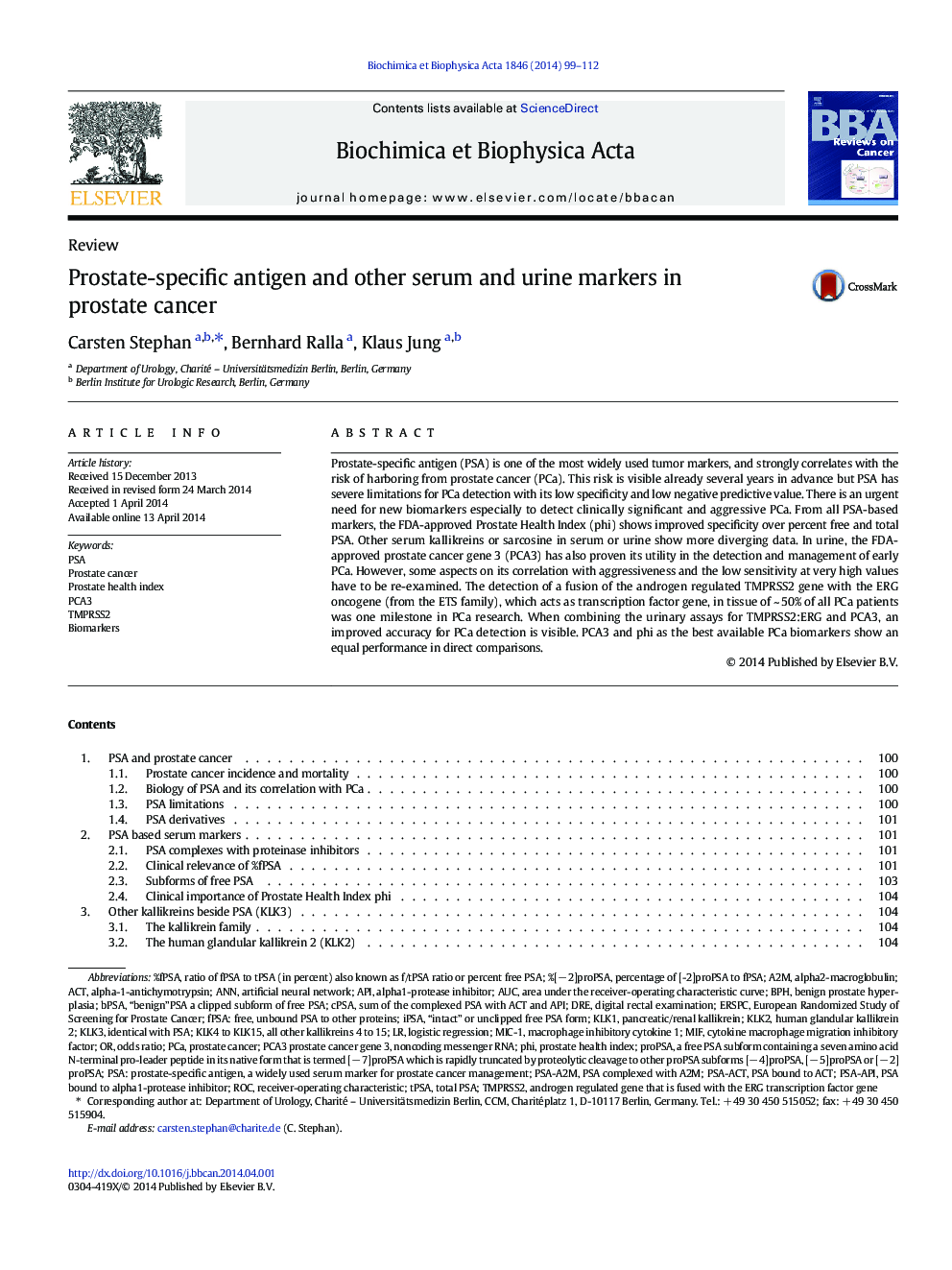| Article ID | Journal | Published Year | Pages | File Type |
|---|---|---|---|---|
| 10895592 | Biochimica et Biophysica Acta (BBA) - Reviews on Cancer | 2014 | 14 Pages |
Abstract
Prostate-specific antigen (PSA) is one of the most widely used tumor markers, and strongly correlates with the risk of harboring from prostate cancer (PCa). This risk is visible already several years in advance but PSA has severe limitations for PCa detection with its low specificity and low negative predictive value. There is an urgent need for new biomarkers especially to detect clinically significant and aggressive PCa. From all PSA-based markers, the FDA-approved Prostate Health Index (phi) shows improved specificity over percent free and total PSA. Other serum kallikreins or sarcosine in serum or urine show more diverging data. In urine, the FDA-approved prostate cancer gene 3 (PCA3) has also proven its utility in the detection and management of early PCa. However, some aspects on its correlation with aggressiveness and the low sensitivity at very high values have to be re-examined. The detection of a fusion of the androgen regulated TMPRSS2 gene with the ERG oncogene (from the ETS family), which acts as transcription factor gene, in tissue of ~Â 50% of all PCa patients was one milestone in PCa research. When combining the urinary assays for TMPRSS2:ERG and PCA3, an improved accuracy for PCa detection is visible. PCA3 and phi as the best available PCa biomarkers show an equal performance in direct comparisons.
Keywords
PCA3KLK3BPSA%fPSAMIC-1TMPRSS2CPSAA2MtPSAproPSAERSPCDREACTROCANNAPIPSAPHIAUCPCAAlpha-1-antichymotrypsinAlpha2-macroglobulinEuropean Randomized Study of Screening for Prostate CancerIPSALogistic regressionProstate cancerProstate health indexArtificial Neural NetworkMIFdigital rectal examinationarea under the receiver-operating characteristic curveodds ratioBiomarkersBPHBenign prostate hyperplasiatotal PSAreceiver-operating characteristic
Related Topics
Life Sciences
Biochemistry, Genetics and Molecular Biology
Cancer Research
Authors
Carsten Stephan, Bernhard Ralla, Klaus Jung,
